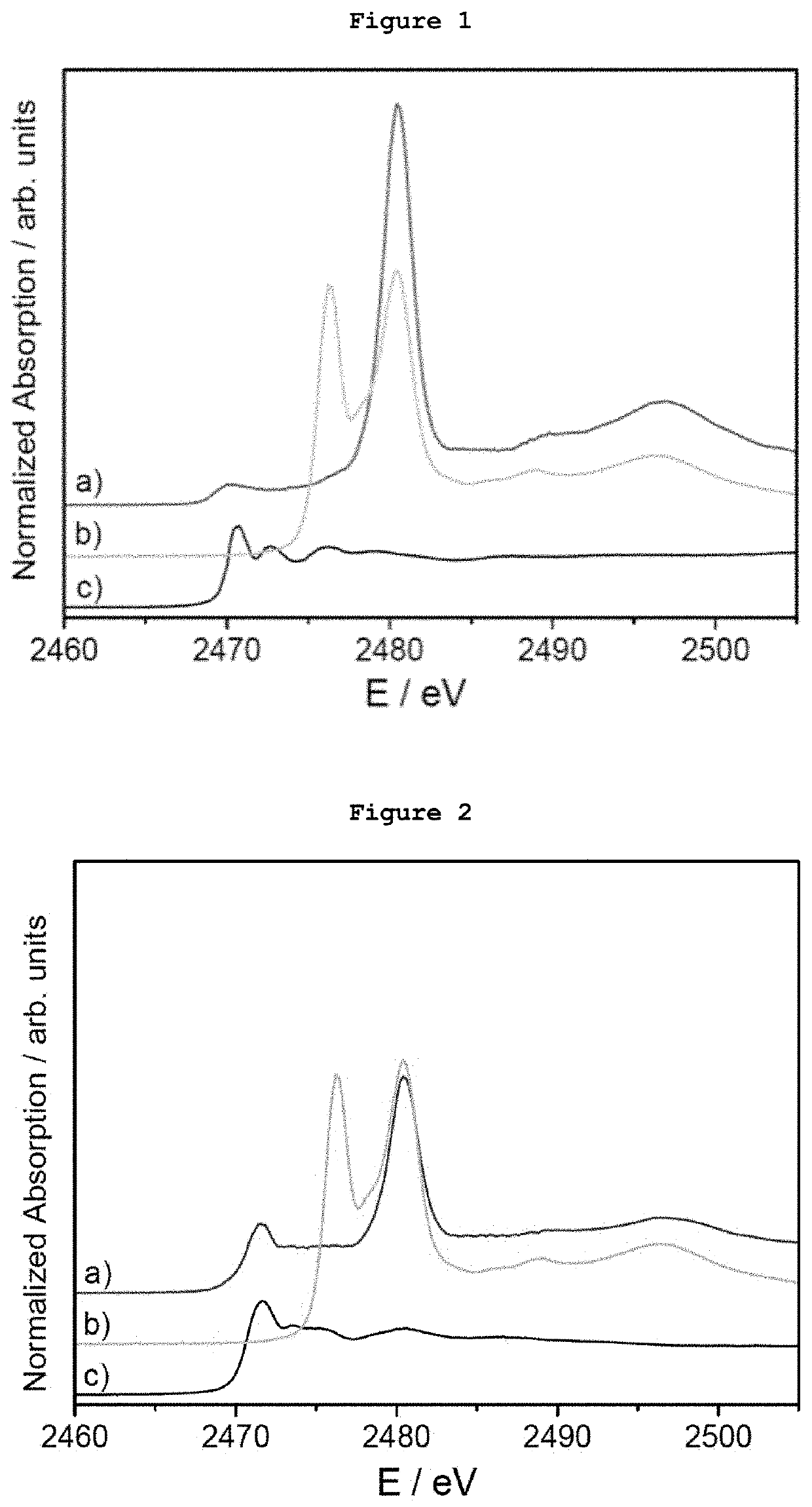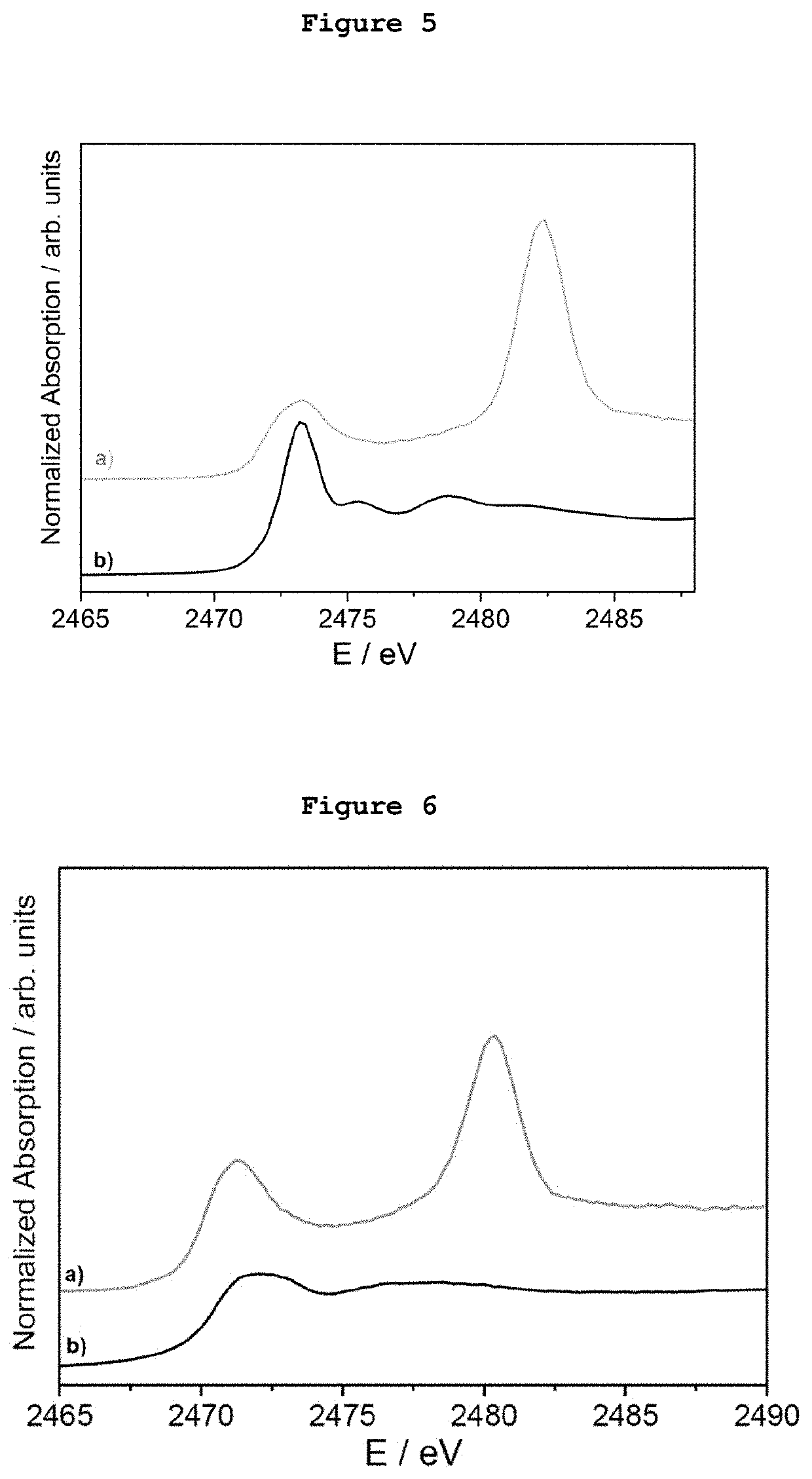Process for oxidation of organosulfur compounds
a technology of organosulfur compounds and oxidation process, which is applied in the direction of metal/metal-oxide/metal-hydroxide catalysts, physical/chemical process catalysts, refining with metals, etc., can solve the problems of premature failure of combustion engines, corrosion of pipelines, and conversion of sulfur dioxide into sulfur dioxid
- Summary
- Abstract
- Description
- Claims
- Application Information
AI Technical Summary
Benefits of technology
Problems solved by technology
Method used
Image
Examples
example 1
of Dibenzothiophene Using Ag AQCs
[0079]5 μg of monodispersed Ag AQCs of 5 metal atoms dispersed in THF-water were mixed with 20 mg of dibenzothiophene. FIG. 1a shows the S-XANES spectrum of this dispersion after been deposited on porous graphite acting only as S-XANES support. It is observed that dibenzothiophene is completely oxidized to sulphate-like species after 10 minutes at atmospheric pressure and room temperature, as it can be observed by comparison with the NaSO4 S-XANES spectrum in FIG. 1b. The reference of the S-XANES of the dibenzothiophene compound without clusters is included in FIG. 1c.
example 2
of Tetrabenzothiophene Using Ag AQCs
[0080]5 μg of monodispersed Ag AQCs of 5 metal atoms dispersed in THF-water were mixed with 20 mg of tetrabenzothiophene. FIG. 2a shows the S-XANES spectrum of this dispersion after been deposited on porous graphite acting only as S-XANES support. It is observed that tetrabenzothiophene is completely oxidized to sulphate-like species after 10 minutes at atmospheric pressure and room temperature, as it can be observed by comparison with the NaSO4 S-XANES spectrum of FIG. 2b. The reference of the S-XANES of the tetrabenzothiophene compound without clusters is included in FIG. 2c.
example 3
of Dibenzothiophene Using Supported Ag AQCs
[0081]0.1 μg of monodispersed Ag AQCs of 5 metal atoms in water were dropped onto a porous graphite support and dried under vacuum. Then, 1 mg of dibenzothiophene dispersed in THF was passed through the Ag AQCs / graphite support. FIG. 3a shows the S-XANES spectrum of this sample. It is observed that dibenzothiophene is completely oxidized to sulphate-like species after 10 minutes at atmospheric pressure and room temperature, as it can be observed by comparison with the NaSO4 S-XANES spectrum of FIG. 3b. The reference of the S-XANES of the dibenzothiophene compound without clusters can be seen in FIG. 1c.
PUM
| Property | Measurement | Unit |
|---|---|---|
| Temperature | aaaaa | aaaaa |
| Pressure | aaaaa | aaaaa |
| Composition | aaaaa | aaaaa |
Abstract
Description
Claims
Application Information
 Login to View More
Login to View More - R&D
- Intellectual Property
- Life Sciences
- Materials
- Tech Scout
- Unparalleled Data Quality
- Higher Quality Content
- 60% Fewer Hallucinations
Browse by: Latest US Patents, China's latest patents, Technical Efficacy Thesaurus, Application Domain, Technology Topic, Popular Technical Reports.
© 2025 PatSnap. All rights reserved.Legal|Privacy policy|Modern Slavery Act Transparency Statement|Sitemap|About US| Contact US: help@patsnap.com



